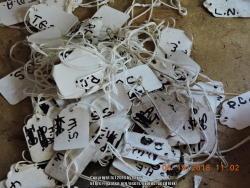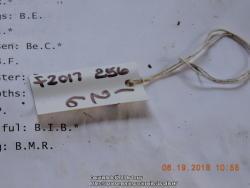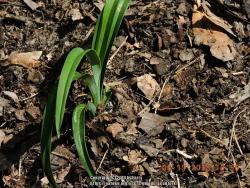To accommodate growth, a 'wrap-around-the-plant' seedling tag could be a 3" or 4" diameter loop, and stuck to the ground with a twig at planting time. By the time the twig rots, the plant is large enough to hold the tag. I don't make a tag for every plant in a seedling bed.
My seedling beds are arranged with a "head end", I use one plant tag per cross, and the seedlings in that cross run from the tag until you come to the next cross tag, and so on. Pretty basic. A map is essential though - I've been saved so many times by a good bed map.
The markers I use are weatherproof, and depending on the stake material used, are about as critter-resistant as it gets. The tags are cut from aluminum soft drink cans, affixed to a metal stake made from 5/32" stainless steel or brass rod. In the absence of severe critter problems such as feral hogs, armadillos and other earth-movers, I use old bicycle spokes as stakes; they're almost all made from stainless steel, available free from bike shops. For something heavier, with more durability, search a scrap metal yard for 3/16" steel rod. Thick rods or stakes can have the tags attached by wire through a drilled hole, or just wrapped around and twisted. A 16-18" steel rod hammered into the earth isn't likely to go anywhere. If you have to buy stake material, steel rod is cheaper, and works fine, but will eventually rust. Surveyor's flag stakes are a good source of 'spring-steel' wire.
The soft, thin aluminum of soft drink cans allows the plant ID to be embossed into them using a cheap ball-point pen. I write on them using firm pressure, with a piece of cardboard underneath in order to allow the pen tip to emboss the metal deeply. The tags are disposable, but the stakes can be re-used indefinitely.
I got this idea from Curt Hanson, and it's what he uses for his acres of seedlings.






